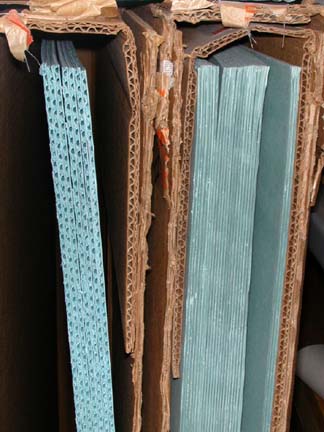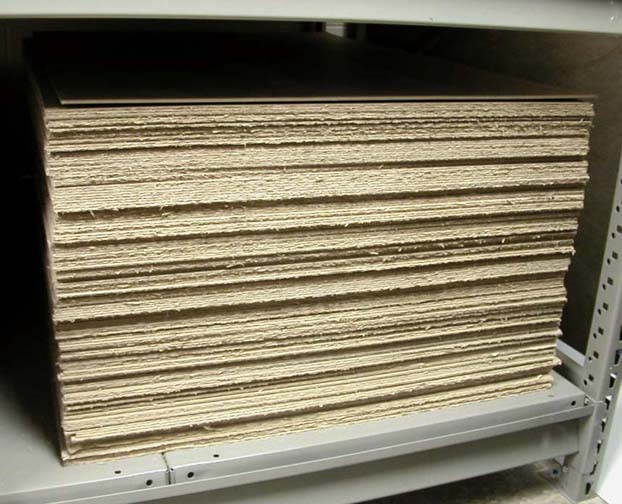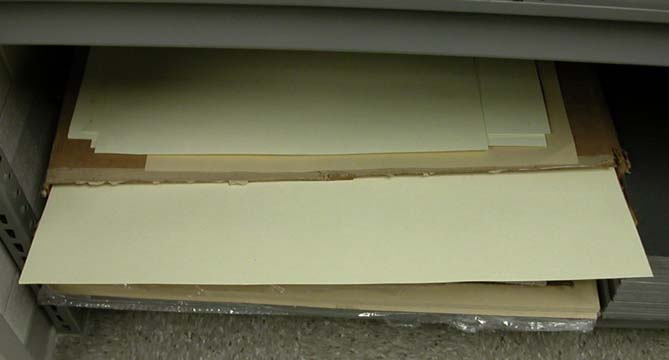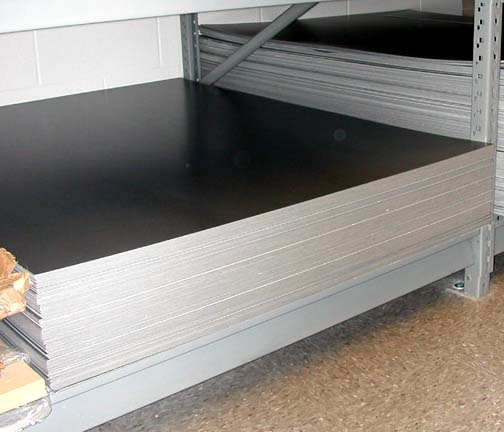Indiana University Libraries Book Repair Manual
Archival Corrugated Board

This acid- and lignin-free corrugated board maintains a pH of 8.0-9.5 and carries a 3% alkaline buffer. It is available in two weights, both of which are available in large (40" x 60") sheet sizes. The heavier (B-Flute) is used for the construction of corrugated clamshell boxes. The lighter weight board (E-Flute) works well for enclosures made with the automated boxmaking machine, and also for the inner structures of built-up boxes.
Binder's Board

This is a traditional material used for binding books. It is available in a variety of thicknesses, and the board we use most often here is .098" (about 2.5 mm) thick. It is made of a dense card material, and its stiffness makes it ideal for use in the casing of books. Like all the board we use, it has grain direction.
Folder Stock

This acid-free sheet material is available in different thicknesses, which are measured in "points." One point equals .001" (or 1/1000" or one thousandth of an inch). The gauges we use are 10-point, 20-point, and 40-point. As a reference, the average business card is normally made from 10- to 15-point stock. The 10-point folder stock is the one we use the most here in our lab. It is used for the inner enclosures of wrapper-type enclosures. 20- and 40-point stock are most often used for the inner enclosures of larger structures such as portfolio-type enclosures, and sometimes for applications such as the construction of partitions within enclosures.
Gray/White Board

Gray/white board is generally used in making enclosures. It has a somewhat glossy coating and unlike binder's board it is normally used bare rather than covered. It is also much more flexible than binder's board. Due to these characteristics, it is not suitable to serve as the boards of new cases for books.